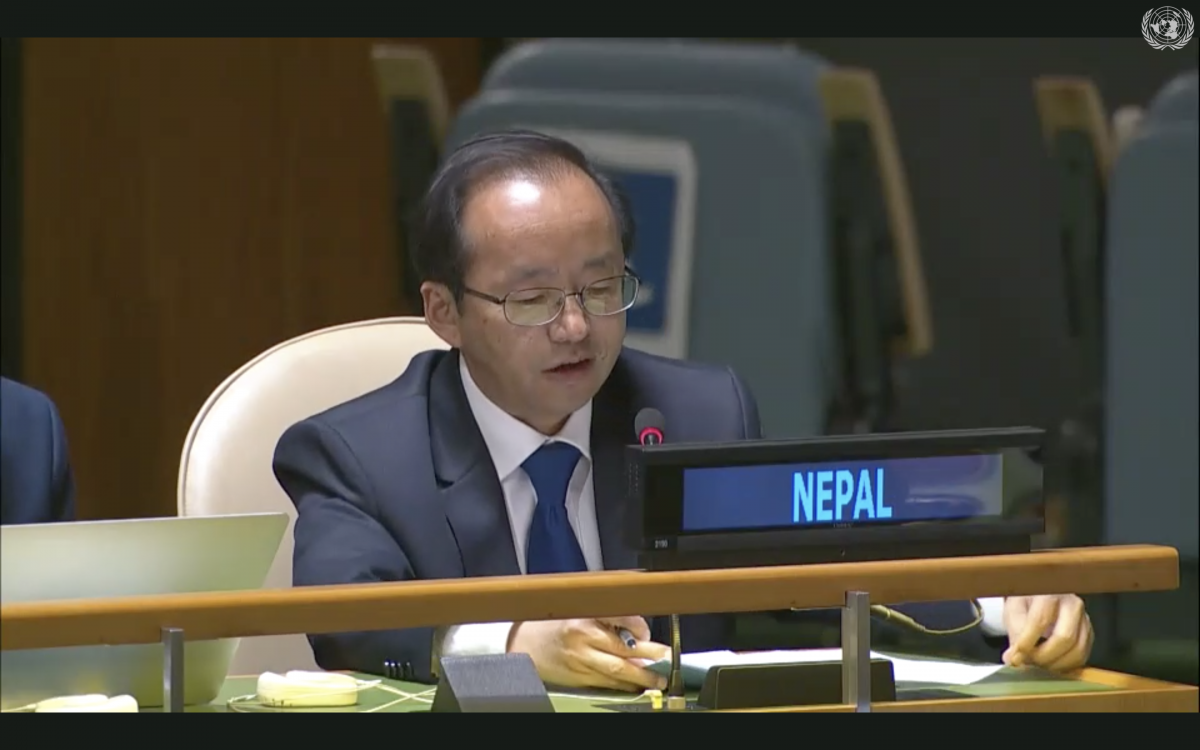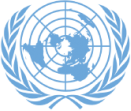
President of the General Assembly,
Excellencies, distinguished delegates,
Ladies and gentlemen.
I would first like to commend you, Mr. President, for your able leadership in steering the work of the General Assembly.
I also take this opportunity to commend the co-facilitators (Ambassadors Sheila Carey and Olof Skoog) from the Bahamas and Sweden for successfully leading the intergovernmental negotiations on the political declaration. Nepal welcomes the adoption of the political declaration.
Needless to say, the HLPF under the GA (also known as SDG Summit) is an important quadrennial occasion to comprehensively review progress in the implementation of the 2030 Agenda.
While sharing our best practices and lessons learned, SDG Summit is also an occasion to identify gaps and challenges with a view to launching concrete and specific global initiatives to accelerate implementation of the 2030 Agenda.
Mr. President,
Our leaders returned home with the message of the Declaration, clear and loud: “Rapid change is possible, and the Goals remain within reach if we embrace transformation and accelerate implementation”.
What matters now is timely and effective implementation of the Agenda. This requires a transformation from the business-as-usual approach to intensifying our efforts for more action and more partnerships.
There are many challenges facing the world from poverty and hunger to climate change and disasters. These global problems require a global response, and global response is only possible through a strong multilateralism.
Two of the central principles that make the 2030 Agenda so ambitious and transformative are ‘leaving no one behind’ and reaching out to ‘the furthest behind first’.
These principles clearly speak out that the global support mechanisms must be inclusive and reach to those countries and people who are furthest behind.
Mr. President,
Four years of implementation has shown that there are gaps –in data, in structures and in financing. The gaps are even huge when it comes to countries in special situation –the LDCs, LLDCs and SIDS. In face of the Mid-term reviews of VPOA and SAMOA Pathway, and the IPOA coming closer, the SDGs implores us as international community to focus our priorities on these neediest countries.
In our journey towards achieving SDGs, the upcoming decade must be both a decade of action and a decade of delivery.
There is no other option for us – other than to have stronger multilateralism that garners global response.
Mr. President,
Nepal, as a landlocked, mountainous and least development country that has gone through political transformation has now prioritized economic prosperity and sustainable development. This national ambition is rightly captured in the Government’s motto of “Happy Nepali, Prosperous Nepal.”
While aligning with most of the SDGs, The Government of Nepal has adopted the 15th Periodic Plan along with the 25-year Long Term Vision of Nepal which aims at laying out a transformational development pathway and bring about structural changes in the economy.
Furthermore, smooth and sustainable graduation of the country from the LDC status is of our priority.
Nepal presented its progress on SDGs at its first VNR during the HLPF of 2017 and plans to present once again in 2020.
Mr. President,
Because of around 800 km long mountain system, Nepal lies in one of the hotspots of climate change.
We attach great importance to sustainable mountain development to address problems and challenges such as poverty and hunger, loss of biodiversity and disaster as well as climate change facing the mountains and people living there.
Keeping in mind the exigencies of climate crisis, the Government of Nepal has decided to convene Sagarmatha Dialogue, an annual global dialogue forum to exchange views on areas including climate change. The first episode of the dialogue will address the pressing issue of climate change.
Mr. President,
Financing for sustainable development remains an important challenge. In Nepal’s case alone, about USD 18 billion per year is required to achieve SDGs by 2030. We will do our best to marshal domestic resources. Equally, we urge our development partners to meet their commitments on an urgent basis.
Nepal also organized an Investment Summit this year to encourage private sector investment.
It is evident that without an increased cooperation and partnership with all our international partners for necessary resources, technology and other supports, achieving SDGs will remain elusive.
I conclude, Mr. Chairman, by highlighting the fact that we need more collaboration and partnerships as rightly encapsulated in the political declaration of the Summit. Nepal is ready to do all it can within its capacity to make our people prosperous yet sustainable planet.
I thank you, Mr. President.


